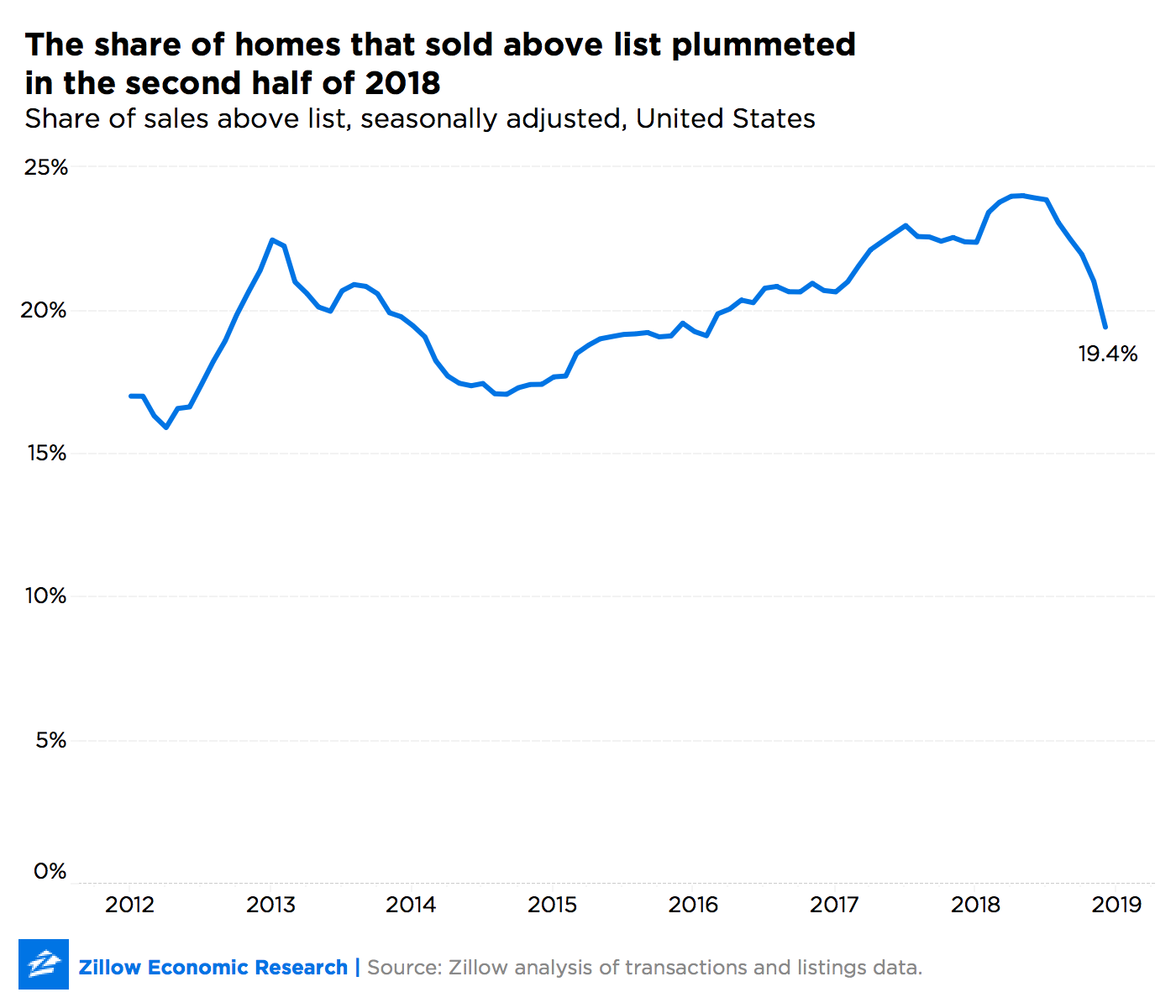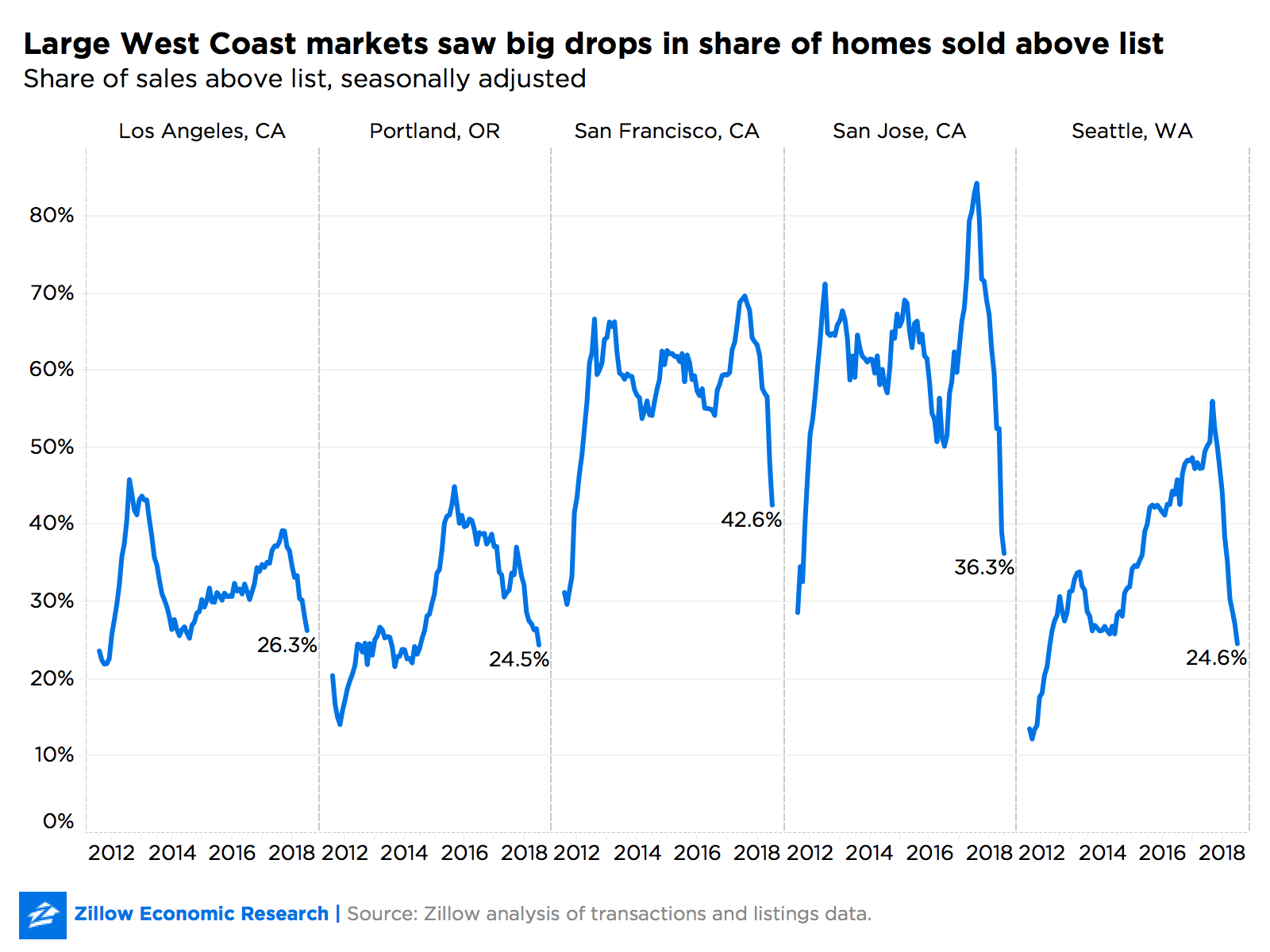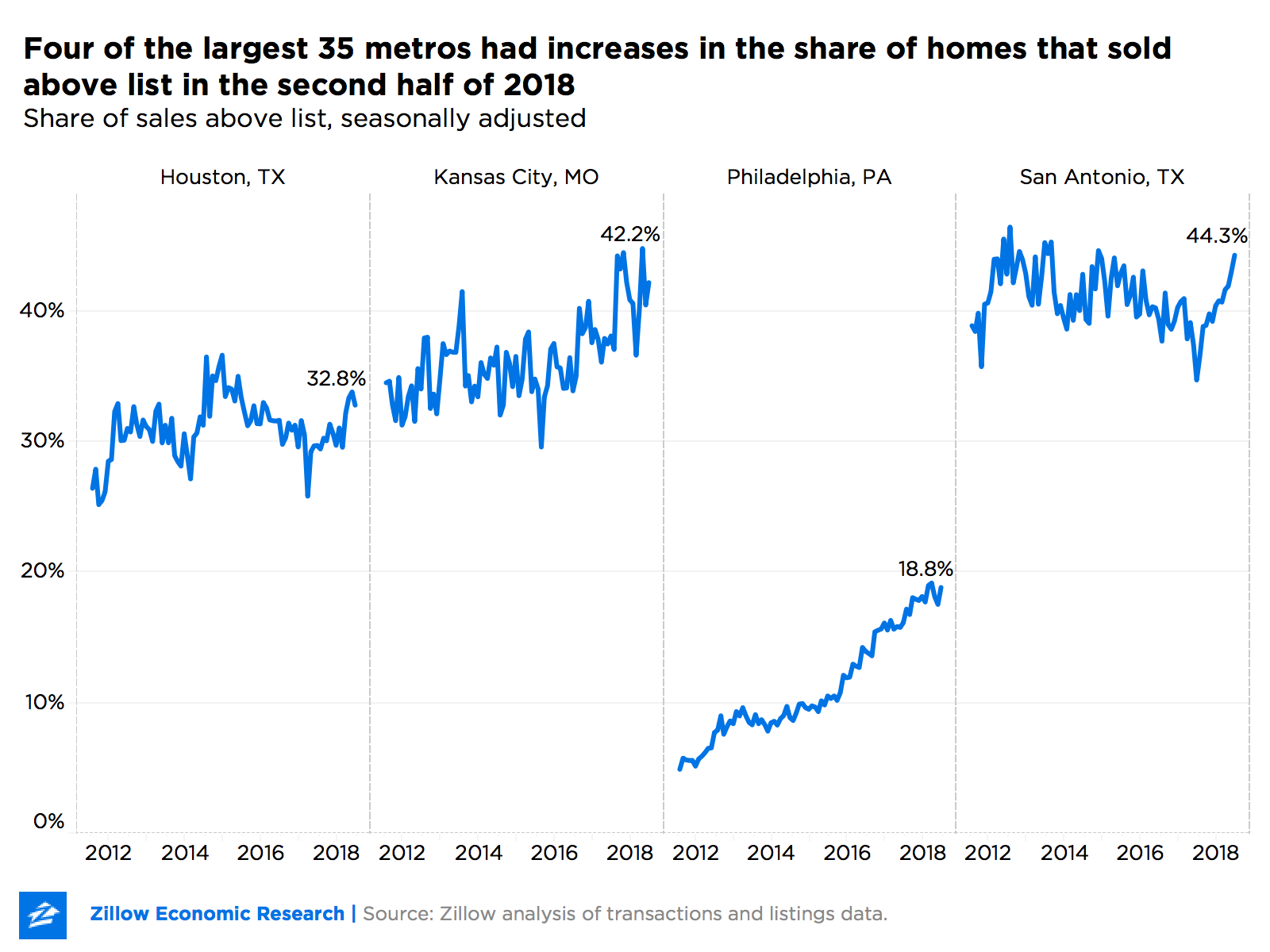After years of progressively more homes selling above their listed prices, the share of homes that sold above list plummeted in the second half of 2018.
As of December, 19.4 percent of homes were sold above their list prices, the lowest share of above-list sales in almost three years. December marked the seventh straight month in which this rate dropped, after the share of homes selling above list reached 24 percent in May 2018 — the highest share since the onset of the housing market recovery.
The high peak and subsequent fall signify changing trends that occurred across the national housing market in 2018. When many homes are selling above their list prices, it can indicate other housing trends:
- First, it can show that inventory is limited, that too few homes are available to accommodate all the buyers in the market. The scarcity pushes more buyers to submit bids over the listed price of the home to edge out competing offers.
- The rush to buy can be exacerbated by low mortgage interest rates, like the historically low rates of the past several years. Buyers are able to accommodate larger mortgages while monthly payments remain affordable.

Both of these factors shifted in late 2018. Mortgage rates reached above 4.9 percent in November, the highest level since 2011, causing some buyers to be more conservative in their bidding. The last months of 2018 also saw the first inventory gains in three years, alleviating some of the competitive pressure on buyers.
The converse of this is that sellers' expectations of what their homes will sell for are undershooting reality. Sellers generally want to price as high as is reasonable, unless they want to sell especially quickly. More homes selling above list means sellers aren't reaching as high as they could. In some hot markets, a decrease in the number of homes sold above list could simply mean that sellers' expectations are finally catching up with the reality of the market.
Not only did the share of homes that sold above list fall, the average price above list dropped too. Among homes sold above list, the typical amount above list has remained above $6,000 for the last several years. As of December, the median amount had dropped to $5,860, while the median discount for homes selling below list held steady. This narrowing suggests buyers and sellers are syncing up on their price expectations.

The share of homes sold above list nationally has moved within the range of 15 percent and 25 percent since at least 2012. But, while national trends in home sales have been strong and limited in fluctuation, separate metropolitan areas have highly individual sales patterns. In some metro areas, homes sell above list with much higher frequency and with very little variation. Dallas, for example, has stayed stable at more than 35 percent of homes selling above list since 2012. Salt Lake City has rarely dropped below 50 percent of homes bid up. In other metros like Tampa and Pittsburgh, this is much more of a rarity, with the share hardly ever exceeding 15 percent.
Large West Coast metros led the drop in homes bid up nationally – another sign that these exceedingly hot markets are cooling. All major West Coast metros had large year-over-year dips in December, the largest in San Jose, Calif., San Francisco and Seattle, where huge swaths of the market shifted to selling at or below list price. San Jose fell 46.6 percentage points (from 82.9 percent to 36.3 percent), San Francisco fell 26.7 points (from 69.3 percent to 42.6 percent) and Seattle fell 25.7 points (from 50.3 percent to 24.6 percent).
Many other metros stayed stable, and a few even went the opposite direction from national trends. Four of the largest 35 metros had increases in the share of homes that sold above list in the second half of 2018: San Antonio, Houston, Philadelphia, and Kansas City. San Antonio and Houston gained more than 3 percentage points each in the last six months, despite increasing home inventory. San Antonio is demonstrating strong demand commensurate to its rapidly growing population – Bexar County is in the nation's top 10 fastest growing counties. Houston's economy is closely tied to the oil industry. Because of that, it is possible sellers did not seek as high a price due to falling oil prices, expecting a slowdown in housing demand that did not manifest.

Ending 2018, homes are still selling quickly. The median time on the market was 78 days, 3 days shorter than last year and 20 days shorter than five years ago. So while the seller's market appears to be waning, it's certainly not over, and this is not a result of weak demand. Homes are more likely to sell at the listed price as a result of convergence in the market expectations of buyers and sellers.
The post Share of Homes Selling Above List Price Plummets appeared first on Zillow Research.
via Share of Homes Selling Above List Price Plummets

No comments:
Post a Comment